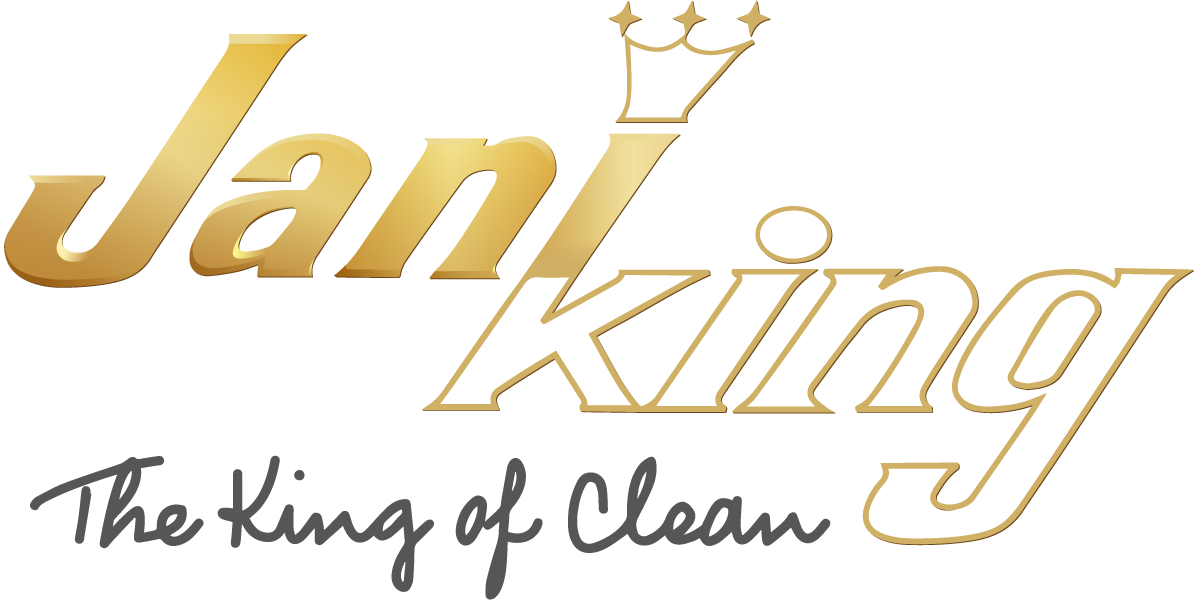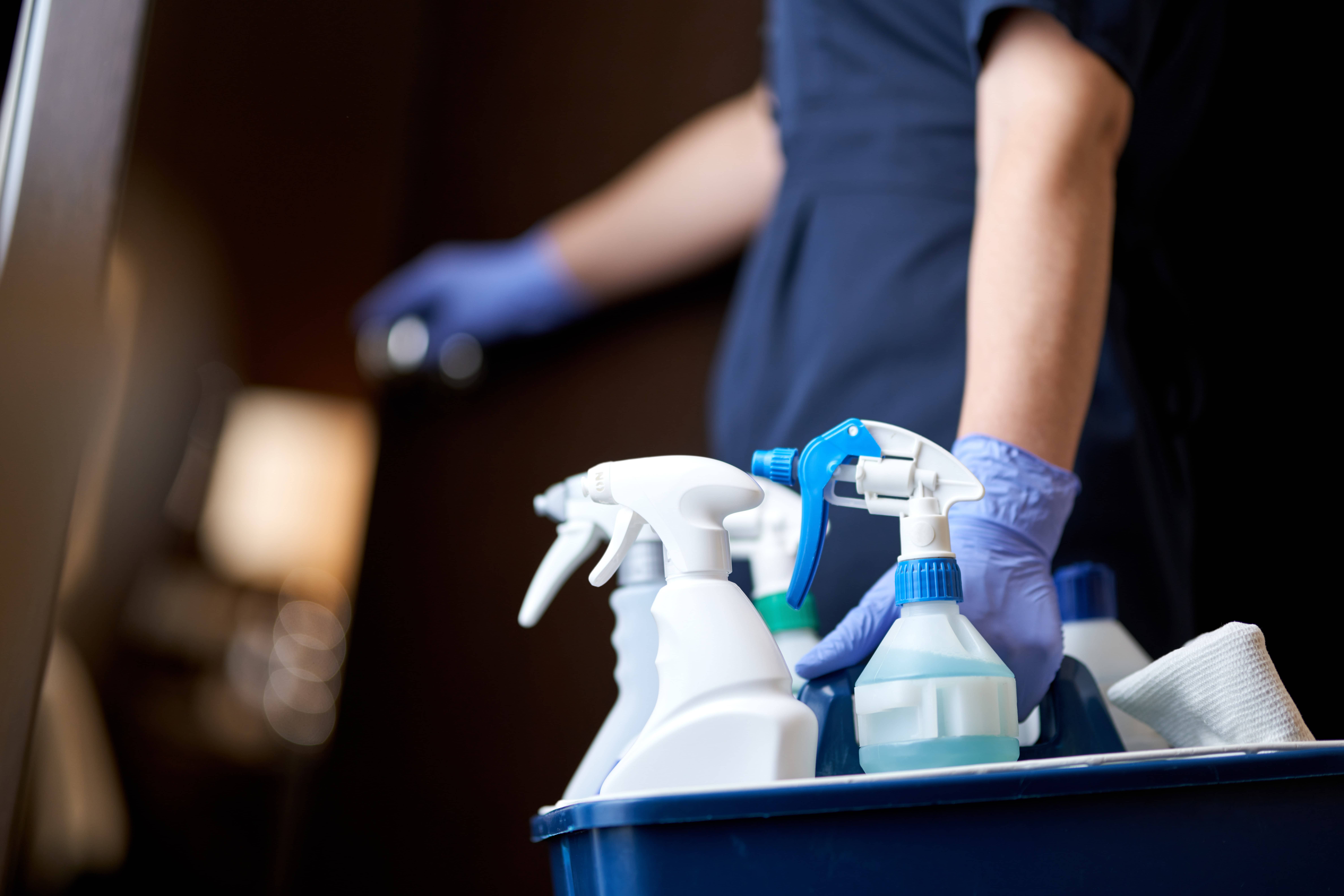According to the National Institute of Health, over 165,000 healthcare-associated infections occur annually in Australian facilities, emphasising the importance of effective post-contamination cleaning.
We’re taking you through post-contamination cleaning, why it matters, and how it works.
The key takeaways
- Medical facilities often experience outbreaks and contamination because of the high vulnerability of patients and the numerous high-touch areas.
- High-touch areas, such as doorknobs, medical equipment and public spaces, are major hotspots for the spread of harmful pathogens.
- Australian standards, such as AS 5369:2023, provide essential guidelines for cleaning and infection control in healthcare settings.
- A three-step post-contamination cleaning process—pre-cleaning, cleaning and disinfecting—eliminates harmful pathogens.
- Professional cleaning services ensure strict compliance with infection control protocols, creating safer healthcare and public spaces environments.
- Jani-King provides expert cleaning services that meet healthcare environments' highest hygiene and safety standards.
Importance of Infectious Disease Prevention
The high number of infections is a significant concern, especially in high-traffic areas like hospitals, clinics and public spaces, which are prime breeding grounds for infectious diseases. Effective post-contamination cleaning not only protects public health but also ensures compliance with health standards and reduces the risk of further infections. This article explores the essential techniques, standards and protocols required for effective cleaning and infection prevention in Australian healthcare environments.
Understanding Contamination and Infection Risks
Contaminants in healthcare and high-traffic environments include a range of harmful microorganisms such as bacteria, viruses, fungi and other pathogens can cause mild to severe illness depending on individual factors. The most common bacteria that is found in high-traffic areas are:
- Bacteria: Escherichia coli (E. coli), Staphylococcus aureus and other harmful strains can cause serious infections. These are commonly found in restrooms, door handles and toilet seats.
- Viruses: Influenza, norovirus and other viruses spread easily through contact with contaminated surfaces. This is especially common in the colder months when cases rise in Australia.
- Fungi: Moulds and yeasts can thrive in damp areas, posing severe health risks to individuals with respiratory issues. If not cleaned properly, mould can spread quickly, increasing the risk of mould spores becoming airborne and causing allergic reactions, asthma attacks or infections.
Inadequate cleaning doesn’t just leave surfaces looking dirty—it significantly increases the risk of contamination spreading. Harmful bacteria, viruses and fungi can survive on surfaces for extended periods if not properly cleaned, raising the likelihood of infecting more people. This poses a serious threat in healthcare facilities, where vulnerable individuals and the elderly frequently visit. Without thorough cleaning, the chances of outbreaks rise, leading to health crises and greater demand for health care services.
Common Areas of Concern
Several common areas tend to harbour harmful bacteria more than others, primarily high-touch points that people interact with frequently. Infection control measures should prioritise these high-touch areas to effectively prevent the spread of harmful pathogens.
- Doorknobs and handrails: Frequently touched by multiple individuals, making them prime sites for pathogen transfer.
- Medical equipment: Thermometers, bed rails and diagnostic tools are highly susceptible to contamination from body substance spills and infectious bacteria.
- Public areas: High-traffic spaces such as buses, trains and school desks are hotspots for the spread of germs.
- Other high-touch surfaces: Elevators, light switches and touchscreens are also key areas where bacteria and viruses can linger.
Australian Standards and Guidelines for Cleaning and Disinfection
Australia has established cleaning and disinfection standards across various industries, particularly healthcare, where strict protocols are most important. Key protocols include guidelines for cleaning high-touch surfaces, reprocessing medical devices and preventing cross-contamination. These measures are crucial in reducing infection risks and maintaining safe environments in healthcare settings.
The AS 5369:2023 Standard for reprocessing reusable medical devices outlines infection control principles, including thorough cleaning, proper sterilisation and separating clean and contaminated areas to prevent cross-contamination. This standard covers the following:
- Reprocessing of Medical Devices: Guidelines for cleaning, disinfecting and sterilising medical equipment.
- Risk Management: Systems for identifying contamination risks and implementing mitigation measures.
- Room Design and Workflow: Specific requirements for separate clean and contaminated areas to prevent cross-contamination.
- Water Quality: Ensuring that water used in reprocessing meets strict safety standards to avoid infection spread.
The Australian Guidelines for the Prevention and Control of Infection in Healthcare, developed by the Commission and NHMRC, help healthcare workers and organisations establish effective infection prevention protocols. These guidelines and disease-specific recommendations ensure measures are in place to minimise infection risks and protect patient safety. For further details about these regulations, refer to the Queensland Health Guidelines.
Following infection control standards significantly reduces the risk of spreading harmful pathogens, creating safer environments for patients, staff and the public. By following these guidelines, health services and public spaces can maintain high cleanliness levels, prevent outbreaks and ensure better health outcomes while complying with Australian regulations.
Key Principles of Post-Contamination Cleaning
Surface classification involves identifying high-touch and low-touch areas to determine cleaning frequency. High-touch surfaces, such as doorknobs, light switches and medical equipment, are exposed to more contamination and need cleaning more often. Low-touch surfaces like walls or floors require less frequent cleaning. By focusing on areas with the greatest risk of exposure to bacteria, cleaning efforts are prioritised where they’re most needed, reducing infection spread and saving time and resources.
Both cleaning and disinfecting are basic principles for effective post-contamination control, but they are often thought to be the same. There are two primary differences between cleaning and disinfecting.
- Cleaning removes visible dirt, dust and debris from surfaces.
- Disinfecting kills harmful pathogens like bacteria and viruses.
Cleaning prepares surfaces for disinfecting, while disinfecting ensures harmful microorganisms are removed. Performing both steps is essential to reduce the spread of infections and maintain a safe, healthy environment.
The three-step post-contamination cleaning process is essential for infection prevention and includes:
- Pre-cleaning: Remove visible dirt and debris from surfaces.
- Cleaning: Use cleaning agents to eliminate contaminants like grease and grime.
- Disinfecting: Apply disinfectants to kill harmful pathogens, ensuring the surface is safe.
Effective Techniques and Tools for Comprehensive Cleaning
There are a few effective techniques and equipment that can enhance infection prevention. It’s recommended to use the following in high-risk settings:
- HEPA filters: Trap airborne particles and pathogens.
- Electrostatic sprayers: Ensure even disinfectant coverage on surfaces.
- UV-C light: Kills bacteria and viruses with ultraviolet radiation.
- Disinfectant wipes: Convenient for wiping down surfaces quickly and effectively.
- Practice proper hand hygiene: Washing hands regularly to prevent spreading germs to surfaces and others.
Eco-friendly cleaning options offer significant benefits in healthcare settings, reducing environmental impact and exposure to harmful chemicals. Emerging green cleaning products that meet Australian standards effectively maintain hygiene while being safer for staff and patients. These products provide a sustainable alternative without compromising cleaning performance. At Jani-King, we use only the safest and most sustainable cleaning products.
Proper use of Personal Protective Equipment (PPE) is essential to ensure staff are protected from contamination, supporting infection prevention and control efforts. Key PPE items include:
- Gloves: Protect hands from chemicals and pathogens.
- Masks: Prevent inhalation of airborne contaminants.
Goggles: Shield eyes from splashes or airborne particles.
Common Challenges and How to Overcome Them
Managing infection control challenges isn’t difficult—it’s about understanding your environment and its specific risks. With the right knowledge of high-exposure areas and the potential for contamination, you can implement effective strategies to prevent the spread of infections. The key is knowing how to adapt your approach to each unique setting.
High Traffic and Continuous Exposure
Focus on frequent cleaning of high-touch surfaces in high-traffic areas like schools and public transport. Prioritising these areas helps limit contamination and reduce the spread of harmful germs.
Training and Awareness
Ensure staff receive regular training in infection control protocols, proper equipment handling and hazardous waste disposal. This ongoing education guarantees that preventative measures are followed to a high standard, reducing the risk of contamination and improving overall infection control practices.
Resource and Time Constraints
To maximise efficiency, focus on high-risk areas and use multi-functional cleaning products. This allows you to save time and resources without compromising on thorough cleaning and disinfection.
The Role of Professional Cleaning Services
When to Hire Professionals
Hiring professional cleaning services becomes essential after an outbreak or when regular cleaning can't ensure proper hygiene. High-risk areas, such as hospitals, clinics and schools, require expert cleaning to maintain strict infection control and prevent the spread of bacteria and viruses.
Benefits of Outsourcing Cleaning Tasks
Outsourcing cleaning provides access to specialist knowledge, ensuring consistent and effective infection prevention. Professionals maintain accountability for their results, adhering to health regulations and helping businesses meet their cleaning standards with reliable, timely services.
What to Look for in a Professional Service
Look for cleaning services with relevant certifications and compliance with infection control standards, like AS/NZS 5469:2023. Experience in managing healthcare or public spaces, alongside a proven track record in handling contamination risks, ensures high-quality, safe cleaning practices.
Case Study: Post-Contamination Cleaning in an Aged Care Facility After Influenza A Outbreak
An aged care facility in Brisbane was hit with a rapid Influenza A outbreak, affecting vulnerable residents and staff members. With the infection spreading across multiple rooms and communal areas, the facility reached out to Jani-King for urgent post-contamination cleaning. Although the facility’s staff could have performed a deep clean, they lacked the proper training, disinfectant supplies and personal protective equipment (PPE) to effectively clean without putting themselves at risk or potentially missing critical areas. We acted quickly, focusing on high-touch surfaces, shared spaces and resident rooms. We thoroughly sanitised the entire facility using hospital-grade disinfectants and following strict infection control protocols. Our fast response helped stop the virus from spreading further, allowing the facility to return to normal operations and ensuring the health and safety of its vulnerable residents.
Prevent the Spread of Infections with Professional Cleaning
Preventing the spread of infections is crucial in maintaining the safety of healthcare and high-traffic environments. By prioritising thorough cleaning and disinfecting of high-touch surfaces, using effective cleaning tools and following infection control protocols, we can significantly reduce the risk of contamination. Partnering with professional cleaning services like Jani-King ensures your facility maintains the highest hygiene standards, protecting staff and patients. With the right expertise and resources, we help you create a safer, healthier environment for everyone.
You're in good hands with Jani-King's medical industry cleaning services
Ensure a safe and clean environment for your patients and staff with Jani-King’s expert medical cleaning services. From waiting rooms to surgical suites, we provide thorough disinfection tailored to your facility’s needs. Contact us today to schedule a cleaning that meets the highest standards of hygiene and safety.

